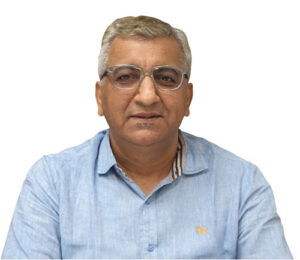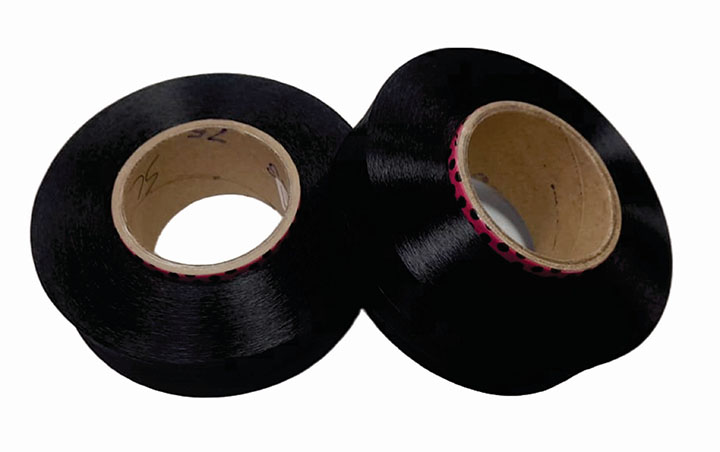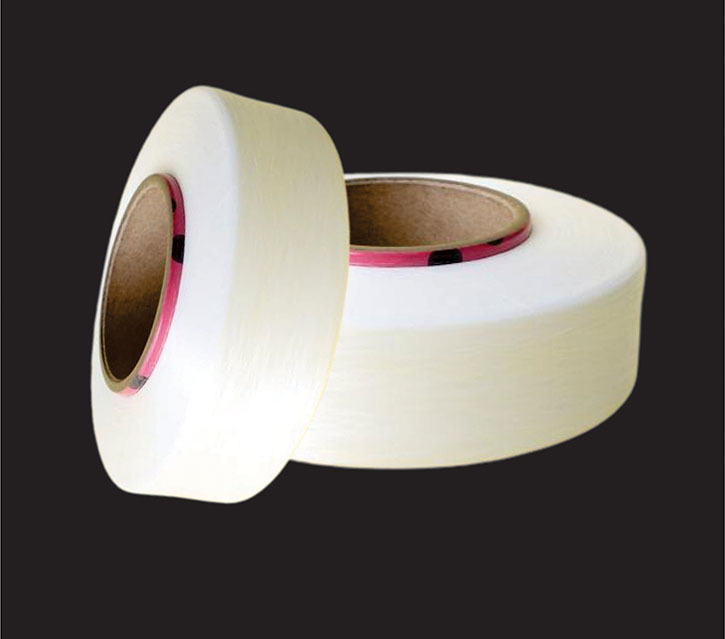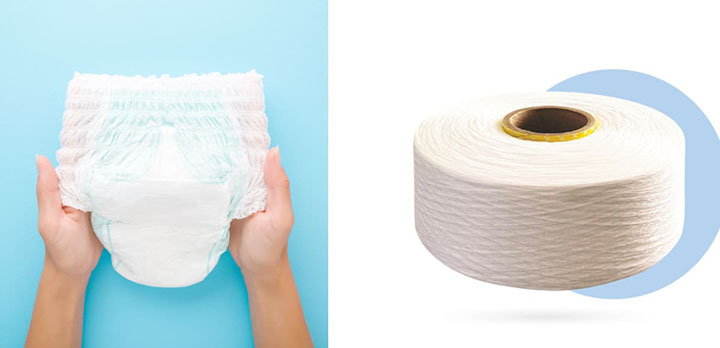Indorama India is Poised for Opportunity by Being Strategically Focused on “Made in India” Advantages
Demand for spandex-blended clothing is growing among consumers in the last few years, due to the flexibility these garments offer. Indorama India, part of the $25 billion Indorama Group, saw this as an opportunity and was the first to start a spandex manufacturing plant in India in 2011 and branded it as Inviya.
Indorama India started with a modest capacity of 5,000 tons per annum and within a space of 12 years increased it four-fold to 20,000 tons per year. The company’s product range includes spandex for woven and air-covered yarns, knits, and specialized offerings like SnugFit for hygiene products such as diapers.
Indorama India also manufactures black spandex which is used in black or grey colored fabrics and which assimilates with the color of the fabric and have also recently launched dyeable spandex.
Indorama India places a strong emphasis on research and development, continuously innovating and testing new spandex products. Sustainability is another key focus, with the introduction of ECOModa-
100, a recycled spandex produced from pre-consumer spandex waste. ECOModa-100 is Recycled Claim Standard and an EU REACH certified product.
Inviya competes with leading global spandex brands, offering a “Made in India” advantage and a comprehensive range of spandex products. The company serves both domestic and international markets, with distribution/warehouse facilities in key textile hubs within India and has a strong global sales channel network.
Indorama India sees potential in various segments, including sportswear fabrics, swimwear, and the diaper market. They are committed to contributing to the growth of the Indian textile industry while maintaining a focus on sustainability and innovation.
International Fiber Journal: Kindly provide a history about your company including when it was started, who started, etc.

Shalendra Vasudeva: Indorama India is part of the $25 billion Indorama Group which was started almost 48 years back by the late ML Lohia and is now headed by SP Lohia, Chairman of the group. The group has two verticals. The first is Singapore based Indorama Corporation(IC) and the other is Thailand headquartered Indorama Ventures (IVL).
Indorama Corporation operates in the space of cotton-based textiles, fertilizers, packaging materials and also spandex. Indorama Ventures operates in the segment of polyester beginning with downstream products like PTA, MEG and Paraxylene and also polyester fibers and yarns, polyolefin fibers, bicomponent fibers, and fibers for automotive textiles, composite fibers, rayon and aramid.
Indorama Ventures is also into recycling of PET bottles and thereafter production of recycled polyester yarns. Incidentally, Indorama Ventures is the largest producer of PET bottle chips in the world. The Indorama Group operates in more than 40 countries with 160 manufacturing sites and has around 40,000 employees.
Indorama IndiaPvt. Ltd is a division of Indorama Corporation and was the very first producer of spandex in India in 2011, which is sold under the brand name of Inviya. The project was conceptualized because entire quantity of spandex consumed in India was imported and we saw a good growth opportunity in the Indian textile and garment sector.
The consumer behavior in case of spandex is very unique and unpredictable. We had a very healthy growth rate for stretch clothing for the past several years and in COVID-19 times, it surpassed our expectations. Buoyed by this growth, new investments in spandex manufacturing went on-stream.
IFJ: Please share details about manufacturing infrastructure and annual capacity.
Vasudeva: We began with an investment close to $70 million in 2011 and set up a plant with a modest capacity of 5,000 tons per annum. Now we have three plants at the same site with a combined capacity which exceeds 20,000 tons per annum, which indicates significant production growth recorded in the past 12 years.
Spandex is made from carbon chain derivatives and has two different raw materials. One is PTMEG and the other is MDI, which we are importing from other countries. Spandex is a proprietary process, which includes polymerization under controlled condition, winding, conditioning and packaging.


IFJ: What are the core company products and solutions you offer for the market?
Vasudeva: When we started, we offered Inviya brand spandex for woven fabrics and air covered yarns segments. Over time, we also developed suitable products of Inviya for knits and narrow fabric products like elastic tapes used in undergarments.
Recently, we launched spandex for a specific use in hygiene products like baby and adult diapers and is sold under the brand name of SnugFit, which too is an import substitute product as this was also fully imported. We are catering to a large customer base in India through SnugFit which also includes multinational companies who produce diapers in India.
The polymer characteristics of our Inviya spandex are different for various applications and even the package weight is different for every application and so we offer our spandex in packages from 1.1 lbs to 6.6 lbs.
SnugFit also passes through additional tests to ensure that the material does not harm the skin. The compliance requirements for the hygiene industry are far more stringent, when compared with textile or clothing segment.
Spandex, by virtue of its polymer characteristics, could not be dyed as it could not absorb the textile dyes. We modified the polymer and now it is possible to dye the spandex with reactive or acid dyes.
Now, we offer a variant of Inviya, which is dyeable and spandex component in fabric produced with dyeable variant of Inviya also gets dyed. This results in a more pleasing appearance for the garment. We also offer it in a black color, which is used in black or grey colored fabrics, which assimilates with the color of the fabric and it is used in high-end dress suiting fabrics.
IFJ: Please share details on your R&D facility.
Vasudeva: We have a well-equipped R&D facility which was started in 2015, where we have installed a pilot plant to develop various recipes of spandex. The varieties of spandex developed at the R&D facility are then tested at the yarn or fabric and even garments stage at customer facilities. Once we get a confirmatory nod from each of these stages, and only then, the spandex variety is taken up for commercialization. All the new varieties of spandex introduced by our company are due to the efforts of our R&D facility.
IFJ: Can you let us know the key trends in consumer demand and the growth trajectory of the Indian apparel market in context of spandex usage?
Vasudeva: The volumetric usage of our Inviya in cotton and polyester products is almost identical, but while there is greater degree of consistency in the cotton segment, there are fluctuations in demand, when used in polyester products.
The consumer behavior in case of spandex is very unique and unpredictable. We had a very healthy growth rate for stretch clothing for the past several years and in COVID-19 times, it surpassed our expectations. Buoyed by this growth, new investments in spandex manufacturing went on-stream.
New investments also came up in various other segments of the textile value chain like spinning and knitting. All these investments created overcapacity, which was disproportionate to the sustainable demand. 2022 and 2023 has also witnessed a slowdown in retail sales of garments.
We do a lot of market research and observed that consumers are moving towards comfort clothing. But at the same time the latest trends indicate that jeans with the original denim fabric, without addition of spandex has revived. This has mainly been observed in women’s clothing. Actually, the denim category has been the key driver of growth of volume of spandex in the past few years. We expect that demand for stretched denim jeans may revive soon.
But at the same time we see a demand for spandex increasing from the knitting segment as more knitting machines are being added each year in India.
In order to increase demand for spandex we did a social media campaign for introducing spandex in school uniforms, because children have lots of physical activities in schools. But since the supply of uniforms is controlled by each individual school and the school uniform fabric as well as stitching industry is fragmented and are more in the unorganized sector, we could not achieve success from the campaign.
Women’s leggings are a huge market for spandex which has fueled the growth of spandex for us in the last one decade. Leggings have penetrated the market tremendously in the last few years and several brands have come up with leggings. Leggings have replaced the traditional salwar market and so is a growing market, while being sold at an affordable price point. Leggings, which used to be available in just solid colors, are now also available in print and patterns.
IFJ: When you mix spandex with yarn at spinning or knitting stage, how much percentage of spandex is added?
Vasudeva: Depending on the fabric structure, 5 to 7 percent of spandex is added at the ring spinning stage, while it is 4 to 10 percent while knitting and swimsuits have 15 percent spandex content. However, 90 percent of fabrics have content between 4 to 10 percent.

IFJ: How important is the sustainability factor for your company?
Vasudeva: When considering production, we use a solvent in the process, which is fully recycled and we also have a zero liquid discharge plant. We have been awarded the “Model Manufacturing Plant” certificate by the pollution control board in the province in which our plant is located for our sustainability initiatives. We have also put up solar plant whose energy is used to meet the lighting requirements.
We have also started producing recycled spandex from this year which is sold under the brand name of ECOModa100. The recycled spandex is produced from the fabric waste which we collect from our customers and garment factories. We have set up a very robust collection supply chain for this waste fabric collection, which is then brought to our plant. This waste is then used to manufacture recycled spandex.
There is a separate dedicated plant to produce this recycled spandex. The current ECOModa100 capacity is very small at two tons per day, but we see a bright future for recycled spandex and we may expand capacity in the near future.
ECOModa100 has been approved by clothing brands like GAP, bestseller and an audit of another European clothing brand is ongoing. ECOModa100 is Recycled Claim Standard (RCS) certified and is also an EU REACH certified product.
In producing one ton of ECOModa100, the global warming potential (GWP 100 years) when compared with producing one ton of conventional spandex, reduced 83 percent. Similarly, the abiotic depletion potential (ADP fossil) dropped 88 percent, human toxicity potential (HTP) decreased 39 percent, primary energy demand (PED) fell 71 percent and blue water consumption (BWC) went down 38 percent.
IFJ: What is the advantage of the products that you offer vis-à-vis those offered by competition?
Vasudeva: Inviya competes with leading brand of spandex in the world, but our home-turf remains our focus area, as the advantage we offer is a “Made in India” product. We also try to stay ahead of competition by constantly launching new spandex products, working very closely with customers for new developments.
Since we also offer functional and technical spandex products, our spandex is not considered as a commodity. In the case of SnugFit, which we offer for the hygiene industry, there are entry barriers like legislative compliance requirements for competitors, so there is very less competition.
IFJ: What challenges did you face in the initial years and what are your strategies for the future?
Vasudeva: Indorama Group started its industrial journey in the textiles segment, which was cotton based and added synthetics to the portfolio in early 1990s. The group made its first foray into spandex business through Indorama India and producing spandex was a challenge as there were many technical issues, which we faced in our formative years.
Ganesha also has a Global Recycling Certificate issued by the Control Union, which confirms that our PSF fibers are 100 percent recycled. We also supply dope dyed fibers and yarns, wherein we obtained ZHDC certificate from our dyes suppliers, which confirms that the dyes are safe and free from harmful metals and are environmentally friendly.
We overcame those by dedicated efforts of all team members and great support from the visionary management. The significant increase in production capacity indicates that we have overcome those challenges. The new functional and technical spandex products were introduced only after we mastered the production of regular spandex.
IFJ: Please share details of your presence in the Indian domestic and export markets, as well as distribution or sales channels.
Vasudeva: We mainly sell our spandex to meet the needs of the Indian textile industry, but we also export to Bangladesh, Turkey, Indonesia, Egypt, Italy and Sri Lanka.
Within India, we have distribution centers in major textile hubs like Ludhiana, Delhi, Surat and Tirupur. We also have stock points at Delhi, Kolkata, Surat and Tirupur and sales and technical services team based in Surat, Tirupur and Delhi who remain in regular touch with customers for their ever-evolving needs.
Spandex is a functional and technical product, and every customer has a different need for a spandex-based fabric and so our technical team helps the customer develop the fabric by adding the right percentage of spandex at the spinning or knitting stage.
Globally, spandex finds the highest application in knitted fabrics as against woven fabrics. Surat is the biggest woven fabric hub in India, but the knitting fabric industry is now taking off since the last few years.
The Indorama Group has a customer base across the globe and so we tap the strength of the group’s distribution network to reach out to customers. In most other countries, we have appointed agents, who represent us for business of Inviya. However, we also maintain a stock point in Turkey.
In India, there is no big production facility to manufacture quality fabrics for sportswear. Almost all of it is imported. So if these fabrics were to be produced in India, then this too could be a big opportunity.
IFJ: Any planned capacity expansion or new investments?
Vasudeva: We have plans to set up another plant at the current site as we still have space to set up another plant, and we shall take the call at an appropriate time.
IFJ: What are your expectations on future growth and opportunities in the Indian market?
Vasudeva: The Indian textile industry as well as Indorama India can grow faster if there are restrictions on imports of fabrics blended with spandex. There is a huge quantity of spandex-blended fabrics being imported from China. If these restrictions are put in place, there will be newer investments in the sector to produce spandex blended fabrics and also in garmenting. Indian textile associations have appealed to the government on this issue.
In India, there is no big production facility to manufacture quality fabrics for sportswear. Almost all of it is imported. So, if these fabrics were to be produced in India, then this too could be a big opportunity.
Swimwear is also a segment which can grow if more swimming pools are added in India. Currently Page Apparels, which is a licensee of Jockey and Speedo in India, is importing all the fabrics used in Speedo swimwear. But if demand for Speedo swimwear picks up, then they may plan to set up a fabric manufacturing unit in India. And these fabrics use 15 percent spandex as against 4 to 10 percent in traditional textile fabrics.
We also foresee very good growth in the diaper segment in the Indian market. The per capita diaper consumption is very low in India when compared with developed countries. But with Indian disposable incomes growing, we see a very big potential for SnugFit, both in baby and adult diapers in the future.


